Facts About Moldy Food and What To Do If You Ever Consume Some
Fungus and mold aren’t only found in forests and jungles. They can also be found inside our refrigerators. Though not all pose health risks, a few do; certain molds and fungi are not visible to the naked eye but can still pose severe health risks.
Mold can grow outdoors and indoors, so it’s helpful to recognize its early growth stages to prevent it from creating havoc in your household. Read on and find out essential facts to help you halt its spread.
Where does it come from?
Mold is present in any place exposed to moisture and oxygen. It can grow very fast based on what it feeds on. Surprisingly, some mold and bacteria are generally safe to eat, like the ones used to make cheese and yogurt.
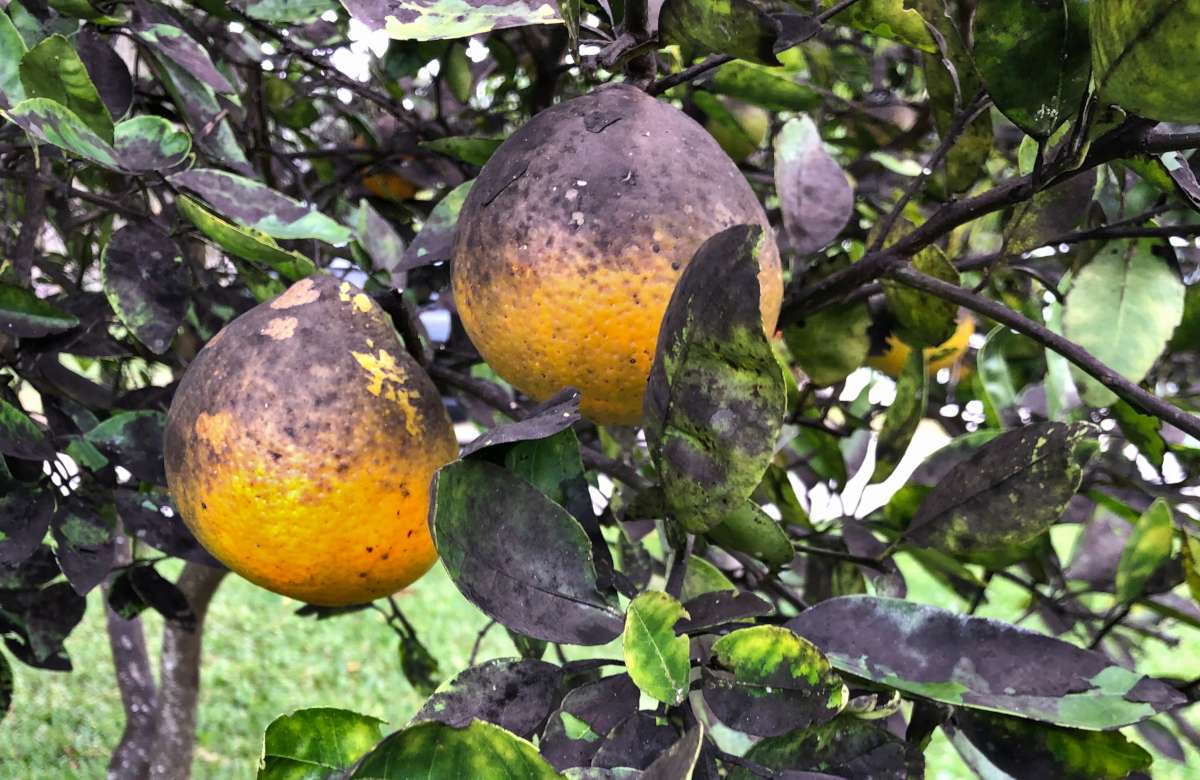
Source: Nature-and-Garden.com
It has yet to be determined how many types of mold exist worldwide. According to the United States Department of Agriculture (USDA), there are thousands of mold varieties. Mold is everywhere! It is so abundant it can even end up on your dinner plate.
How does mold get around?
Mold reproduces by releasing spores, which move by floating through the air, water, animals, or even people. That’s why they can be found everywhere. Anyone can easily breathe and absorb these tiny spores into their bodies unintentionally. Knowing the symptoms of exposure can help you avoid mold-related health issues.
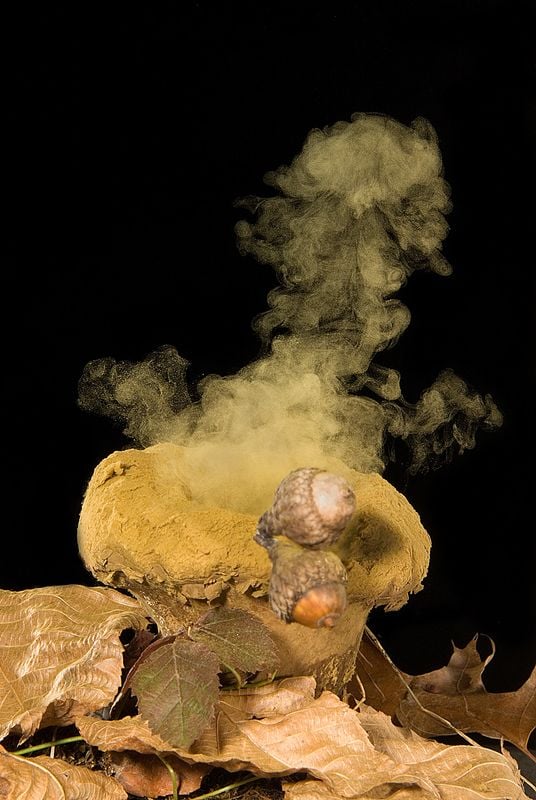
Source: stevegettle.com/ Pinterest
Mold can be hazardous to people when they are exposed for long periods of time, but there’s no reason to live in fear. As long as you know the tell-tale signs, you can avoid their dangerous effects and have them removed immediately.
What does mold look like?
Leftovers are great—but leaving food for too long opens it up to mold attacks. Mold can appear gray, black, yellow, or green. Dr. Carla Gervasio notes that mold spores tend to be present in numerous areas of the house.
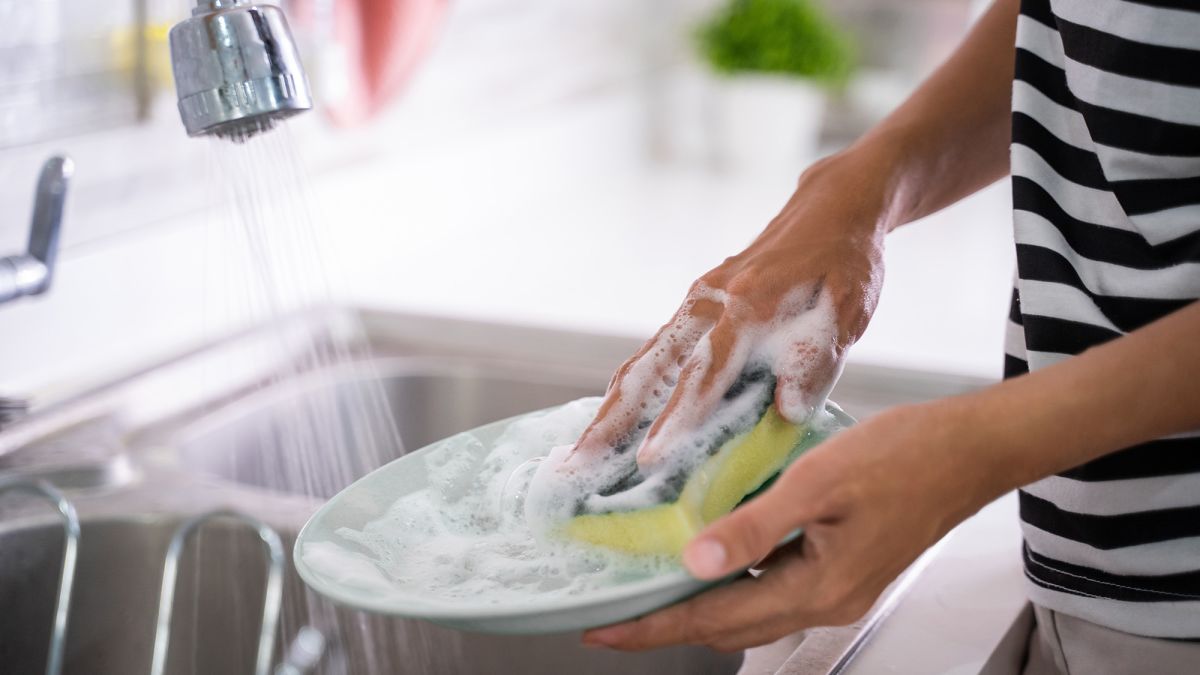
Source: Undefined.photos
Damp areas that have been left undisturbed for a long time are prime places for mold to thrive. This may include kitchen cabinets, sponges, sinks, and countertops. If you do not clean regularly enough, you may accidentally be consuming mold spores with your food.
How do you prevent mold from getting into food?
You’re likely to find mold on perishable food—in other words, food that tends to decay quickly. Many factors affect the development of mold. One of them is the amount of time you leave food outside its packaging or the refrigerator.
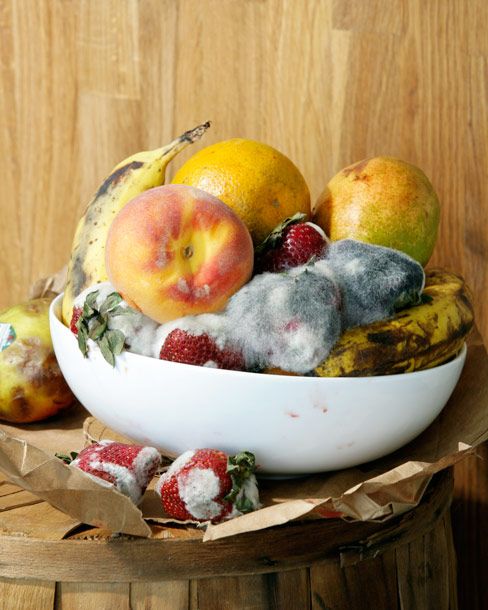
Source: Nymag.com/ Pinterest
Whenever you purchase perishable products, make sure you store them properly. Always make sure to put your food in airtight containers or resealable bags if you can, and label and monitor its storage life. And if you ever find yourself some spoiled food, make sure to throw it out immediately.
Where is the best place to keep food away from mold?
Fish, meat, fruits, vegetables, and milk can rot extremely fast, especially if not properly stored. Ginger, eggs, garlic, and onions, however, can last for weeks if placed in a dry and cool spot. Also, nuts, oats, and similar non-perishable food items can last for months with the right kind of storage.
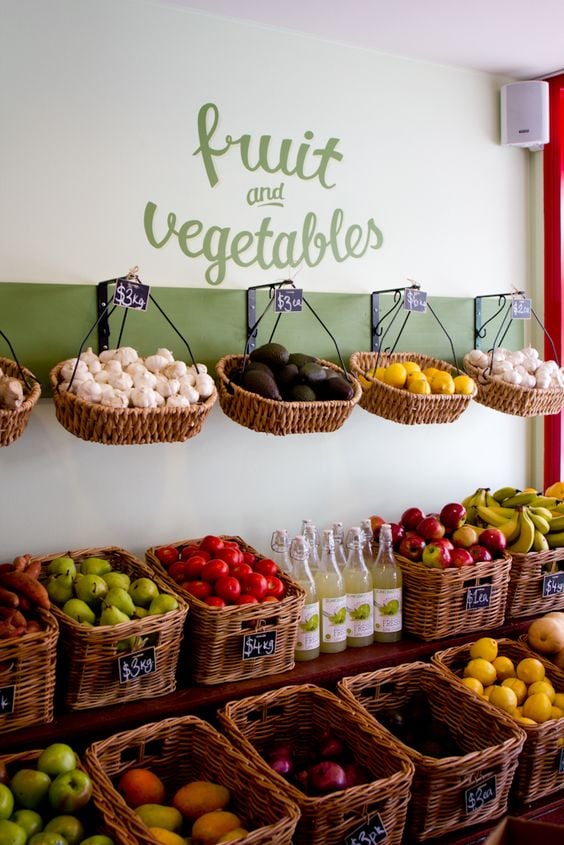
Source: depositosantamariah.blogspot.com/ Pinterest
The key is keeping food away from high humidity and heat areas. Exposing food to sunlight can also spoil it quickly. Ever wondered why your refrigerator doesn’t have a window? They are designed to keep food in an ideal state for longer.
Can mold cause food poisoning?
Absolutely. Since mold grows in humid environments, it can quickly develop on bread and cheese. The best way to avoid mold is not to allow food to sit outside for long, as doing so can cause mild to heavy food poisoning.

Source: Stylecraze/ Pinterest
If you notice your food has changed its appearance and smell, there is a high probability it already has mold and toxins that could be dangerous. Therefore, you should immediately throw it away, just to be safe!
is risky. Though there are harmless molds, some may cause mild food poisoning.
Can preservatives keep food from spoiling?
Traditional techniques for food preservation are still being used today. For example, ingredients like salts and spices are added to certain food items to preserve them. Curry, chorizo, cured hams, and sausages are only a few examples of traditional food preservation.
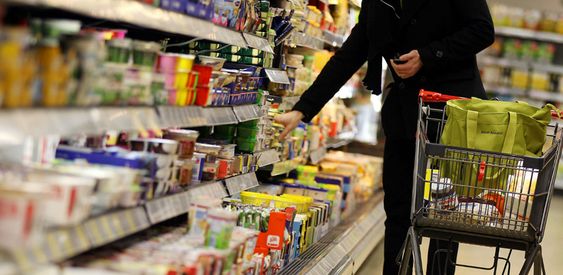
Source: infoalimentos.org.ar / Pinterest
Food can be preserved either chemically or environmentally. While the latter involves refrigeration and drying, the former uses additives such as juice, lemon, sugar, spices, and salt. Unfortunately, some large companies use artificial preservatives that could potentially harm people’s health.
What are the pros and cons of preservatives?
Natural additives such as vinegar, sugar, salt, and sodium nitrate destroy the mold and bacteria that cause food to decay. Meanwhile, butylated hydroxyanisole (BHA) prevents oily and fatty foods from becoming rancid. Moisture can also be controlled thanks to humectants.
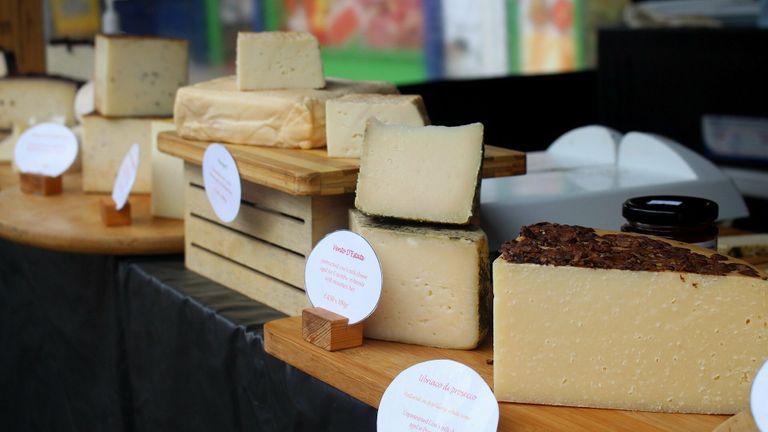
jamstraightuk
Though placing additives in food products can preserve them, they have severe health risks. The worst of them is BHA. Asthma, neurological damage, allergies, and even cancer can all come about as a result of preservatives. Natural food items are always a better alternative.
Antibiotics For Preservation
There are special chemicals used for chicken, fish, and canned goods. Antibiotics are even used to kill dangerous bacteria in foods. For example, tetracycline is commonly utilized in the US poultry industry. However, its usage is being increasingly regulated due to health concerns. The same is true of other antibiotics and preservatives.
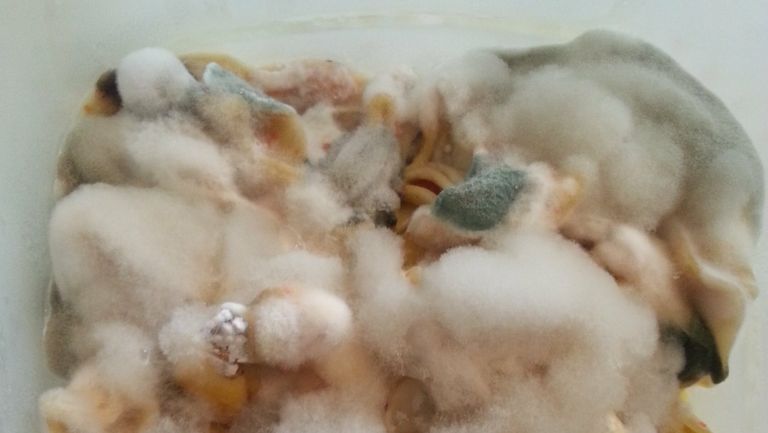
Lorenzo Blangiardi
Antimycotics like sorbic acid are used to prevent mold from growing in fruit juices and cheese. It is sprayed on the food’s exterior to prevent any mold growth while it is shipped across the country.
Sodium Nitrates In Foods
Meat curing is a method of preserving food where it is treated with either salt or a mixture of salt and other ingredients such as sugar, nitrates, or nitrites. The salt makes the food too salty for most bacteria and mold to grow on.
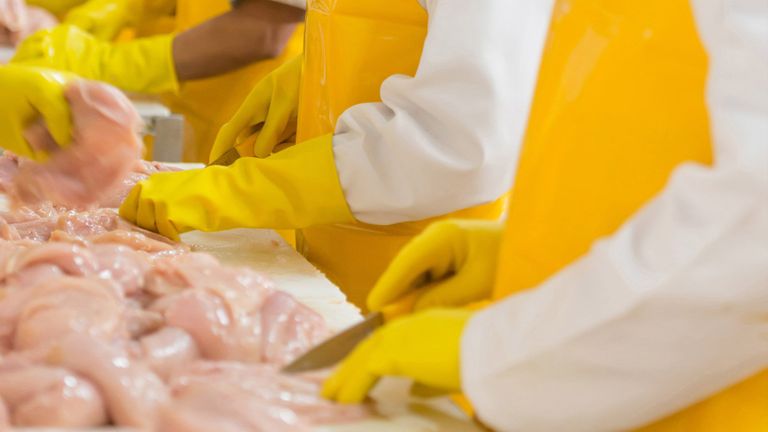
Antone Royster
Sadly, these preservatives have been shown to cause health problems. For instance, sodium nitrate (which also provides a rich red color to ham and bacon) has been linked to some foodborne illnesses, particularly botulism, a disease of the nervous system.
Demand For Replacement Of Artificial Preservatives
Consumers are increasingly demanding foods and beverages to be free from artificial ingredients to fit into their lifestyles. They want new products to be based on natural ingredients. As people become more health-conscious, natural preservatives are now being tested to replace artificial ones.

Sameer Goyal
For hundreds of years, preservatives have been used to extend the shelf life of food, but critics believe that today’s high standards of cleanliness and technology render them unnecessary. In contrast, the food industry argues against this demand. They say that if they stopped using artificial preservatives, consumers would stop buying food due to its unappealing appearance.
Spoiled Food Odor And Texture
Food spoilage has many odors, depending on the type of microbe and the food being spoiled. Some molds have a pleasant strawberry odor. However, other molds in decomposed foods smell musty, sour, or even fishy.
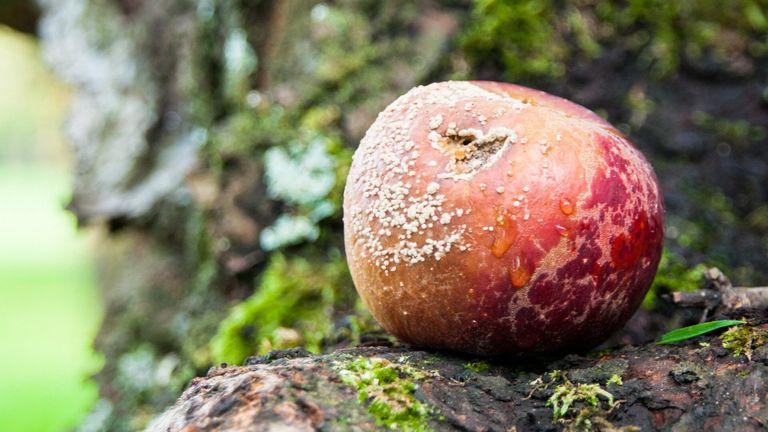
susanne906
Other than the smell, food that is slimy or sticky also indicates spoilage. With fruits and vegetables, once they become wrinkled, brown in color, and unusually soft, you should throw them away. Unfortunately, no amount of scrubbing and washing will be able to improve spoiled food.
Dealing With Moldy Food
People use different tactics when deciding whether or not to eat food that has mold on it. Some of them cut off the moldy part of the food and eat the rest, while others throw out the entire food item when there is even the tiniest spot of mold on it.

Shutterbug75
Remember, mold is a type of fungi that is found in bread and other foods. The danger inherent in mold is that it can multiply and spread. It can also cause food poisoning if someone consumes the food on which mold grows. Overall, cutting out the sections of moldy bread isn’t as effective as throwing out the entire loaf.
Throw Or Eat?
Why is it best to throw out every part of moldy food? Mold can spread quickly, and it can penetrate deeply into food items. It has roots, branches, and threads-like tendrils. Since the roots are not visible, it might be hard to know what part needs to be cut off.

adonyig
It’s not just a bad taste that you’re risking if you eat moldy food. It’s actually dangerous to your health. “If you can see a mold growing, there can be other microbes such as bacteria and yeast in the food as well. It’s really not worth making yourself sick,” an expert says.
Moldy Foods You Can Still Eat
Certain foods can become moldy even if they contain preservatives. This doesn’t mean that they’re unsafe; it just means that you can’t eat the spot that has mold. For example, if you have a piece of salami with mold on it, just cut out the moldy parts.

Pixabay
You can also apply this rule to hard vegetables and cheese. All you need to do is to cut at least an inch around and below the moldy part, making sure the knife does not touch the mold. Once you slice out the mold, the rest of the food should be safe to eat.
Foods You Must Throw Away When Moldy
On the other hand, soft fruits, bread, baked goods, yogurt, and soft cheeses that have been opened should be thrown out if any mold is seen at all. Why? There’s a deadly mold found in soft bread, which is known as Rhizopus stolonifer (also known as black bread mold).
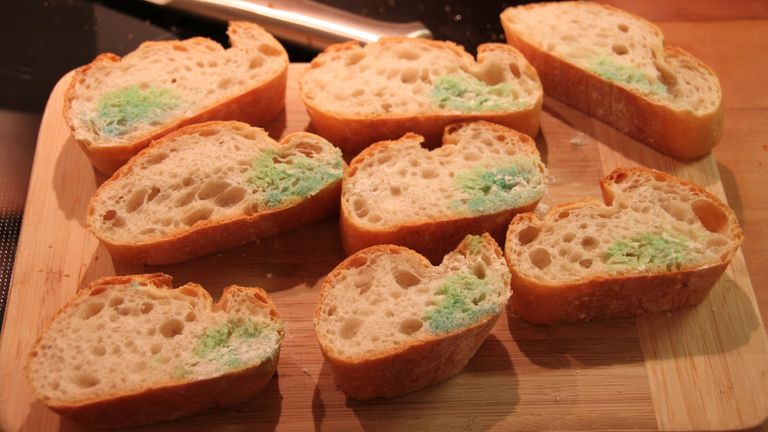
Tim Bartel
Foods with high moisture content, such as soft fruits, yogurt, and cheeses, have a higher risk of growing dangerous mold. Also, these foods have an even higher chance of invisible bacteria growing alongside the mold, which makes them unsafe to eat.
Don’t Toast Moldy Bread
If you believe that toasting bread can kill mold, you’re dangerously mistaken. As we’ve talked about earlier, molds have roots that can go down deeply in bread. So, there’s a high chance that the moldy part was already contaminated and the toxins already spread throughout the whole loaf.
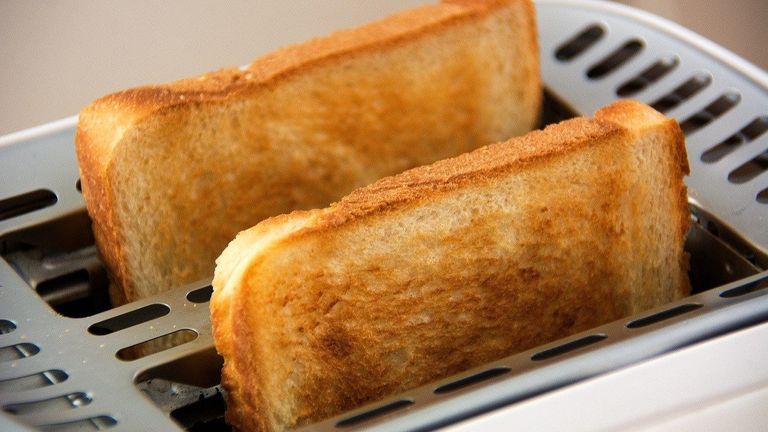
CordMediaStuttgart
Don’t think twice once you see black moldy spots in your bread – just throw it away! Your health is more important than being frugal with your food expenses. If you don’t want to waste money next time, make sure that you consume your food before the expiry date.
Ways To Prevent Moldy Foods
To prevent mold from growing, you need to keep your fridge clean and remove any spoiled food immediately. When storing foods in the refrigerator, keep them covered and use leftovers within three days. Any open canned goods should be placed in a container and refrigerated immediately.

difisher
Surprisingly, the fridge can actually offer the perfect environment for mold. Food kept in temperature-controlled environments or in dry, non-porous conditions is less likely to grow mold than food kept in moist areas, so adding paper towels or bicarb soda to absorb moisture in your fridge is a good idea.
Your Fridge Can Only Keep Food Good For So Long
Mold can grow in any environment, even in the cold conditions offered by refrigerators. Mold does grow fastest in humid, warm places. However, it can handle the cold too. So, putting something in the fridge won’t stop the risk of mold – it will just keep food safe for a longer period.

Katrin Gilger
Since mold grows in almost all environments, removing rotten food immediately is the most effective way to prevent it. However, you can’t just throw away the moldy food and be done with it. Mold spores can spread through the air easily, so it would be best if you also cleaned the fridge thoroughly.
Rethink Bulk Food Purchases
When shopping for groceries, avoid buying large amounts of food at once. This way, you can prevent the root of all spoiled and moldy foods in your home. Only buy the things you need for a couple of days or weeks. For example, never buy bulk loaves of bread or a large jar of jam.

stevepb
Also, try not to buy discolored produce. Bruise marks are the result of the fruits being left out too long. These discolored areas will cause mold to develop quickly. Buy firm and fresh fruits and vegetables.
What Happens When You Accidentally Consume Mold?
In most cases, if you’re healthy and the mold is only in a few spots, it isn’t a big deal. You only have to worry about moldy food if it has been there for a long time and has started to release mycotoxins.
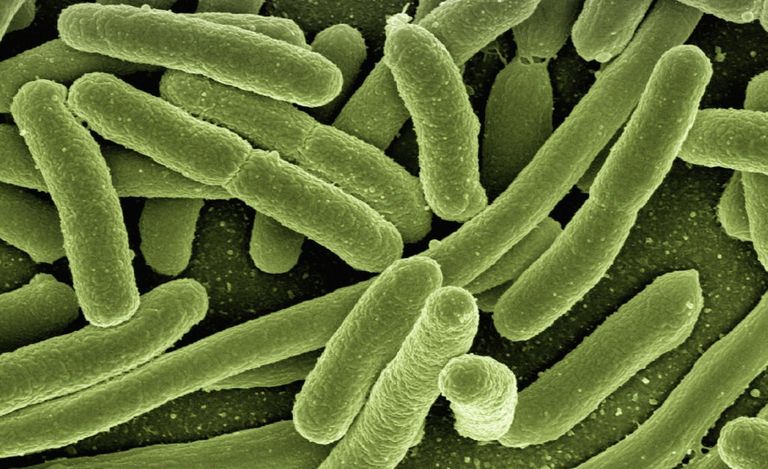
geralt
Most strains of mold are harmless. However, if you have an allergy, chances are you’ll likely experience vomiting and nausea. Fortunately, most mold tastes bad, so before you consume it, there’s a chance that you’ll be able to spit it out.
Low Chance Of Feeling Sick
One expert says there’s a risk of developing a severe reaction to mold, but this is unlikely. Also, you’d have to consume large amounts of the mold before it made you sick. Who would eat that much food with mold on it? The truth here is that you probably won’t get sick from ingesting a bit of mold.
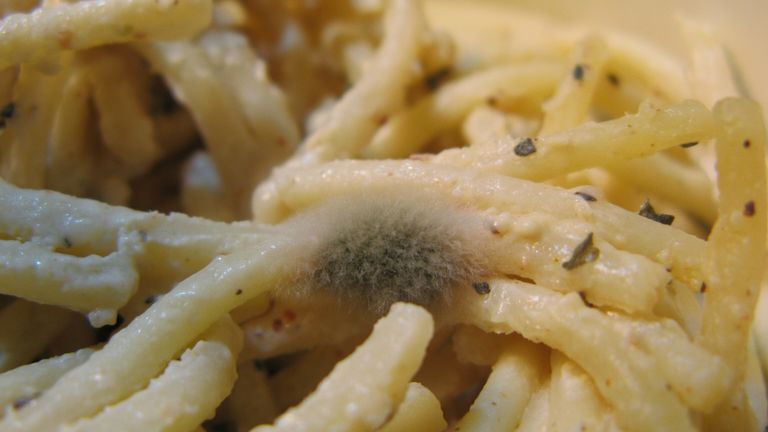
Justin Taylor
While it’s true that, in small doses, mold isn’t harmful. The mere fact that it tastes disgusting will result in some people feeling uncomfortable and upset about having consumed something that contains it.
Vomiting And Nausea
If you do get sick from mold, the reaction may take time to manifest. If you vomit after eating mold-infested food, talk to your doctor. They’ll probably give you anti-nausea medication or something to help you safely rid yourself of the toxins.

AJ_Watt/Getty Images
If you still feel a bit nauseated, a doctor might recommend medicine to induce diarrhea to help you flush out all the bad bacteria in your stomach. Although it’s unlikely that this will happen, it’s still best to know what to do.
The State Of Your Immune System Matters
New York City nurse Maria Yuabova also believes that most molds are harmless. She said, “When the immune system works well, and healthy gut flora is abundant, molds will have no negative impact on the health and wellness of that individual.”
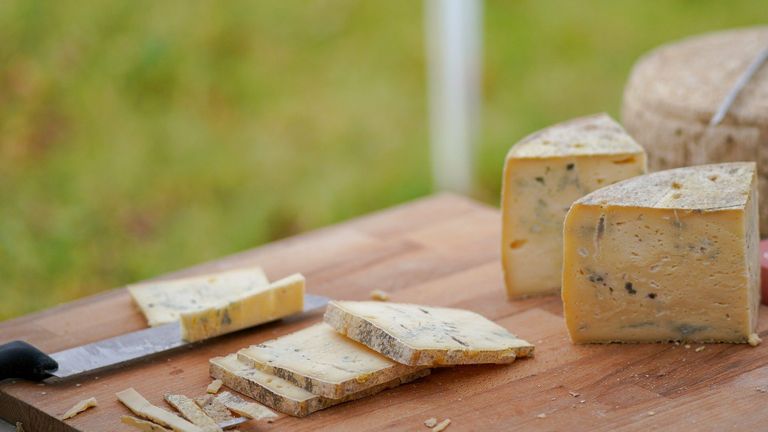
6342722
What happens if you’re not in perfect health? If you have a weak immune system, mold can cause infections that affect the eyes, skin, lungs, and other organs. People who have weakened immunity should avoid mold exposure and take extra precautions to prevent mold-caused infections.
Severe Cases
Let’s talk about the severe cases of mold infection. “When fungal invasion becomes systemic, the fungus can invade the digestive tract, upper respiratory tract, and brain. Those cases become more serious,” Yuabova added. There are also some which can produce mycotoxins. One of these mycotoxins, aflatoxin, can cause cancer, according to the USDA.
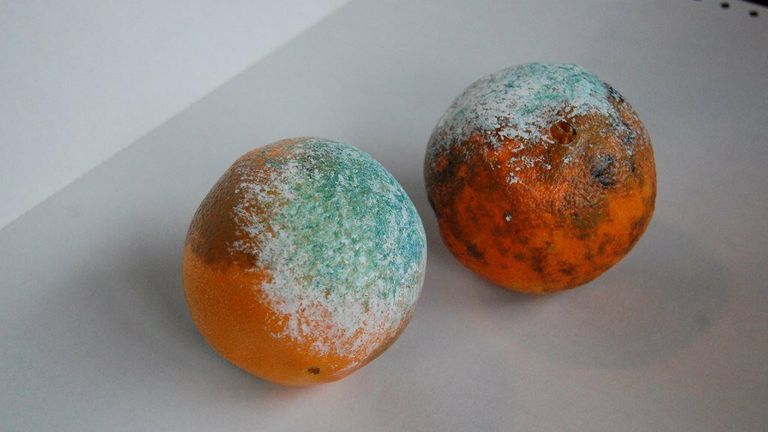
steve lodefink
Some people who have asthma can be triggered by mold allergies. It causes restricted breathing and other airway symptoms. Asthmatics, those with immune system problems, and, persons with HIV, who have eaten mold should contact their doctor.
Symptoms Like Food Poisoning
Lisa Richards – a nutritionist and creator of the Candida diet – noted that a bad reaction to the ingestion of mold could be similar to food poisoning. It can cause unpleasant symptoms such as vomiting and diarrhea. Richards says this is because mold releases toxins that affect the body, similar to food poisoning.
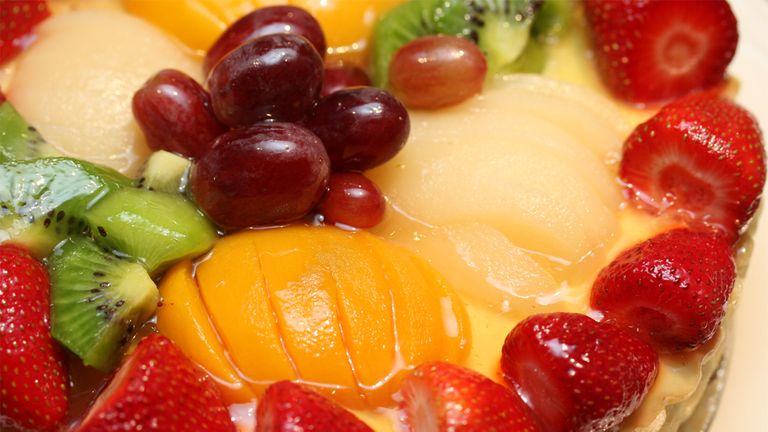
essie
Thus, if you’re going to consume food that’s a little old, it’s important to absolutely guarantee that it is not contaminated with mold. If you don’t, then your chance of suffering from serious complications will be greater.
Restoring Healthy Bacteria
If you unintentionally eat some mold, you’re likely to be okay. However, if you start experiencing symptoms in your stomach, you should add a probiotic to your routine and follow a very bland diet to help restore the healthy bacteria in your gut.
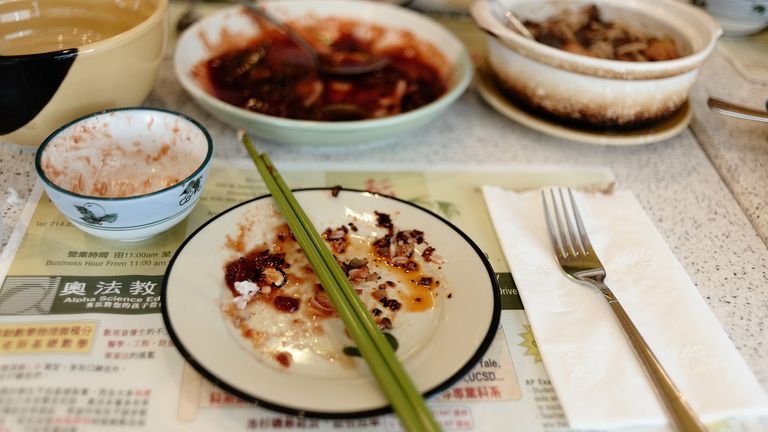
Jorge Gonzalez
Molds that have released mycotoxins can cause serious health problems in your gastrointestinal system. You should immediately consult a doctor if you experience nausea and vomiting. You might need antibiotics or other medications to fight the infection. Taking probiotic supplements during this period may also help.
Mold In Soft Cheeses
While some molds are not safe to eat, this cheese in the pictured photo is an exception. It contains Penicillium camemberti, a known fungus. It is used in the production of popular cheeses, including Brie, Camembert, and Cambozola cheeses.
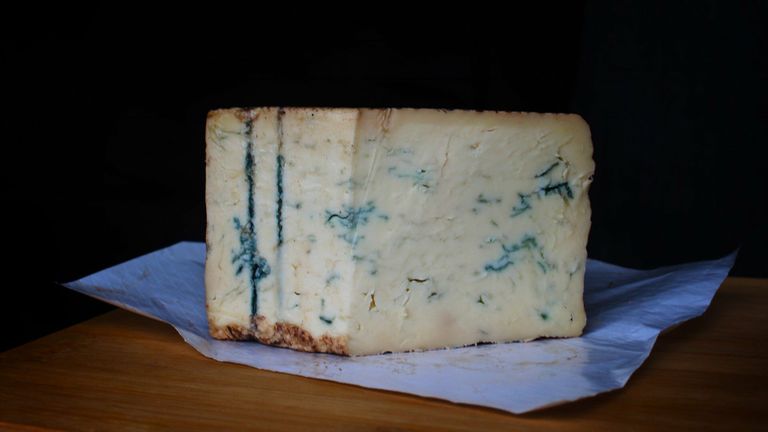
jamstraightuk
Cheese manufacturers either mix the mold into the ingredients or add it to the outside of the cheese. Penicillium creates the blue to dark gray roots in this cheese. If you’re wondering why anyone would make moldy cheese, read on!
Texture And Flavor
Different cheeses have different textures and flavors created by bacteria digesting specific proteins and sugars. Brie and Camembert cheeses have a soft, buttery texture because of P. camemberti.
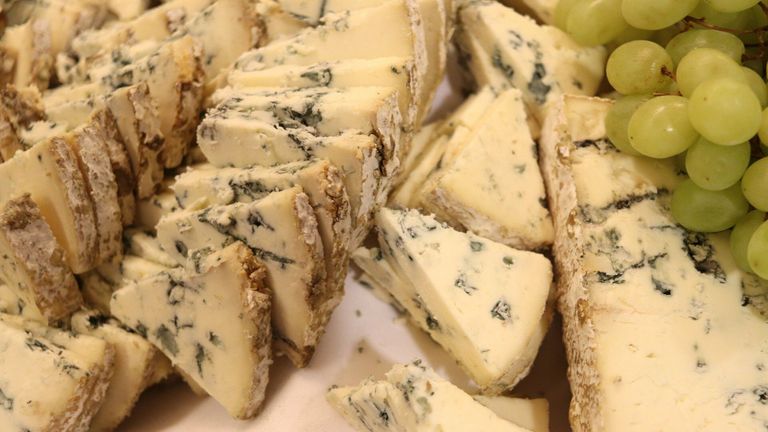
johnoghue
The method used to age these blue cheeses causes high acidity, a high degree of moisture, a good supply of oxygen, and high density. These conditions prevent dangerous molds and harmful toxins from growing. That’s why the presence of mold in this delicious cheese is safe to eat.
What Is Blue Cheese?
Let’s dive into the topic of blue cheese! Did you know that it has sharp and salty characteristics? Yes, blue cheese is a little saltier than other cheeses. If you’ve eaten a lot of blue cheese, odds are, you’ve smelled it on your hands before too.
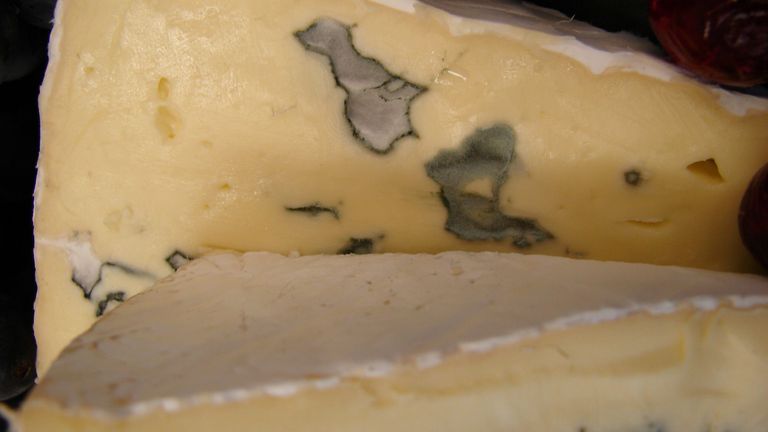
Quinn Dombrowski
It has a foul smell that comes from both the mold and the growing bacteria in the cheese. Though blue cheese has an unpleasant odor, it is healthier than other forms of dairy because it contains less lactose and more nutrients.
The Health Benefits Of Blue Cheese
Blue cheese is rich in nutrients and provides a variety of notable health benefits that people can enjoy. A certain kind of mold called Penicillium roqueforti in blue cheese can help lower cholesterol and control blood pressure.

U.S. Department of Agriculture/Bob Nichols
Blue cheese also contains a compound known as spermidine. It delays aging and reduces the risk of cardiovascular disease for some consumers. Though the effect remains unclear, experts suspect that blue cheese has positive effects on cardiac muscle cells.
Blue Cheese Can Treat Other Illnesses
Besides all of the benefits detailed above, blue cheese also reduces the risk of inflammatory diseases such as arthritis and inflammatory bowel disease. It contributes to lower plaque levels in our arteries, strengthening the immune system, and fighting sinus problems and food allergies.
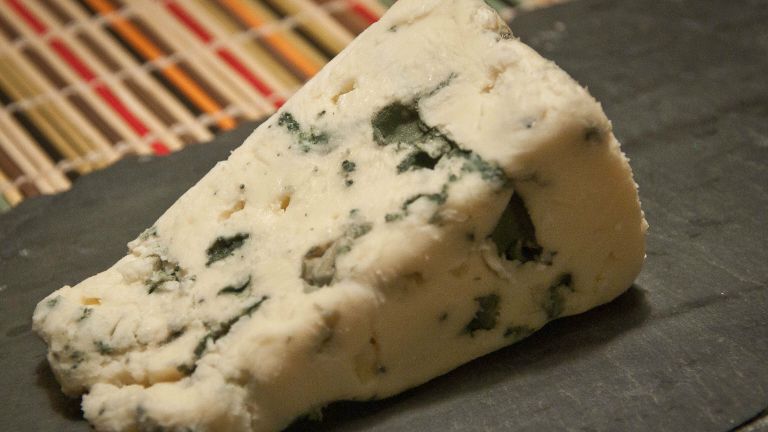
Sarah Nichols
Along with these benefits, the high calcium content in cheese is also linked to improved gut health and fat burning. Studies found that eating blue cheese manages and burns excess abdominal fat in the body. If you wish to maintain a fit body, add blue cheese to your diet.
Nutrients And Minerals
Blue cheese is also great as it contains a lot of minerals and vitamins, such as potassium, phosphorus, calcium, and zinc, as well as vitamins A, D, and B12. It is also one of the best sources of magnesium, which is important for reducing muscle stiffness.

Quinn Dombrowski
Most notably, blue cheese is rich in calcium – the main mineral responsible for bone density. At the same time, vitamin B12 improves the nervous system and boosts functions like cell metabolism and red blood cell formation. Can you believe that?
Ideal For Children And the Elderly
Every ounce of blue cheese has an average of six grams of protein, which can contribute to the growth of bones, cartilage, muscles, hair, skin, and blood vessels. A study on young female athletes provided evidence for this theory.
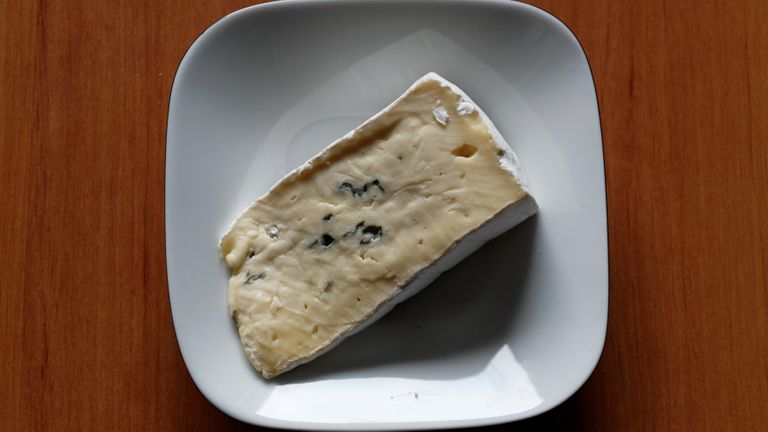
Daniel Panev
Researchers found that dairy products such as blue cheese prove more effective at promoting growth and bone strength than calcium supplements. Also, this dairy product can help improve brain function because it helps promote the regeneration of brain cells – specifically for the elderly and children.
Penicillin is A Friend To Humanity
Penicillin is derived from penicillium mold. The antibiotic penicillin was the first major antibiotic in the world. Its discovery in the 19th century greatly increased the power doctors had to protect patients against infection.
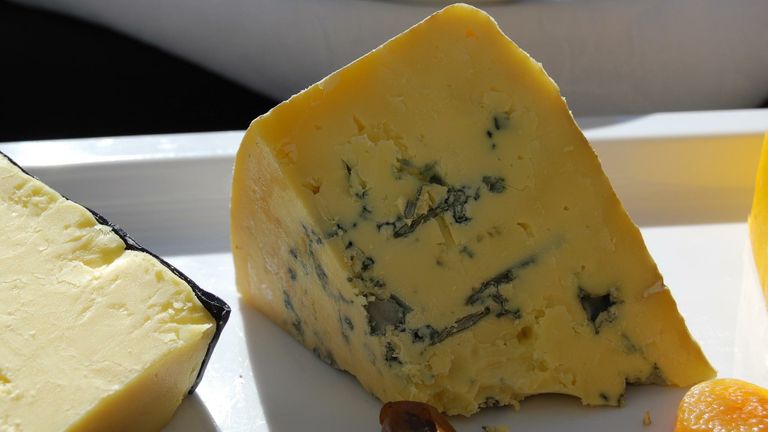
missbossy
Before its introduction in the 1940s, doctors were helpless when confronted with pneumonia, gonorrhea, and rheumatic fever cases. Though it was in the UK where penicillin was discovered, mass production began in America.
The Discovery Of Penicillin
In 1928, Alexander Fleming accidentally discovered penicillin. After returning from a holiday, he was sorting bacteria samples in his lab when he noticed some mold growing on one of the dishes. That mold turned out to be colonies of Penicillium notatum.
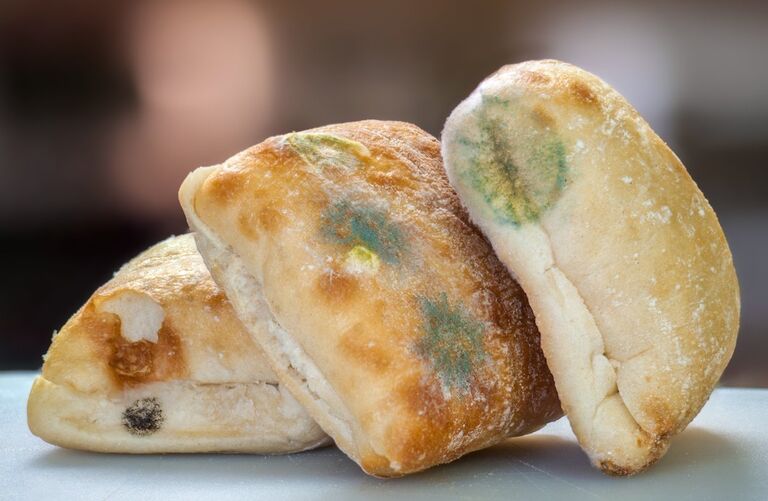
Perry Gerenday/Getty Images
Alexander Fleming observed that there was no bacterial growth within the area surrounding a certain mold. So, he thought that the mold must have useful properties. Fleming asked his assistant to isolate the mold from the fluid so he could examine it more closely.
Penicillin Became The Most Used Antibiotic
In 1929, Fleming published his findings in the British Journal of Experimental Pathology. At this stage, he had just realized the potential therapeutic benefits of his discovery. Scientists developed a keen interest in purifying and developing penicillin, but most failed.
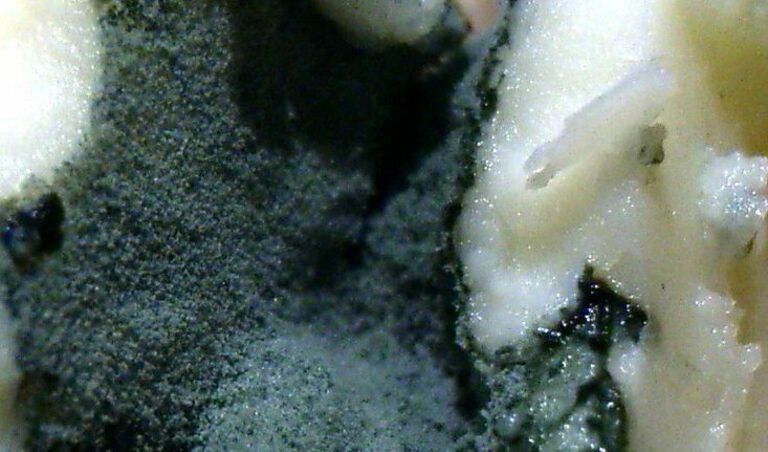
Perkons
Boris Chain and Howard Florey were the ones to finally purify it in the late 1930s. An injectable form of it arrived soon after, and it is still used today to fight meningitis and infections that could otherwise be deadly. While ingesting mold on food can lead to discomfort and nausea, without mold scientists would never have developed penicillin. As with most things in life, there’s clear positive and negative factors that stem from mold.
